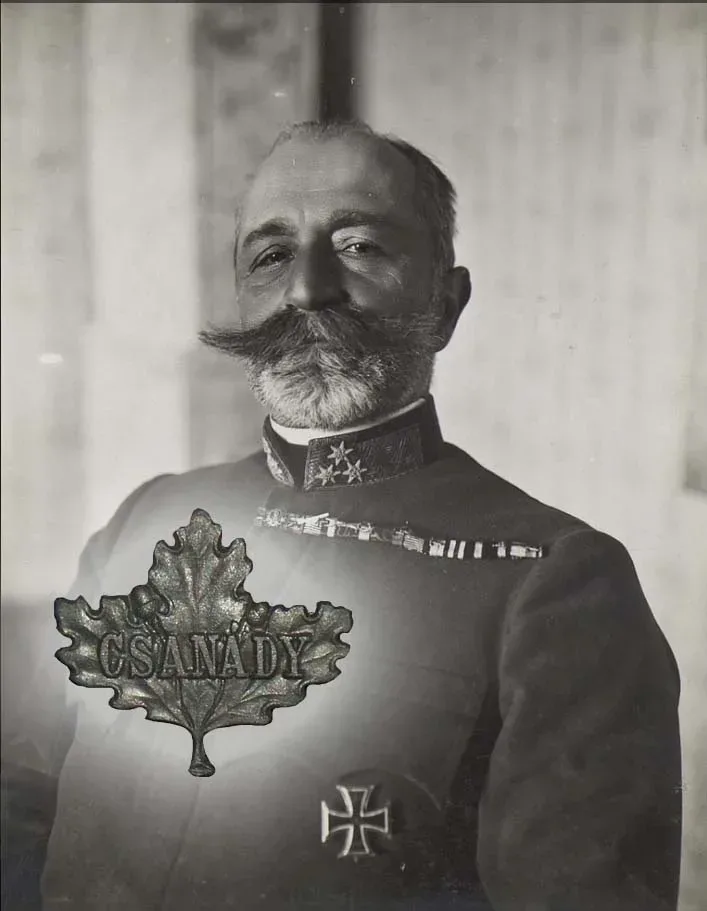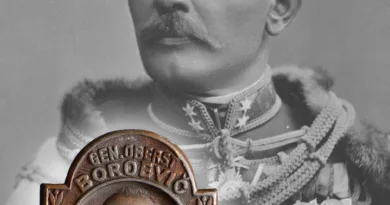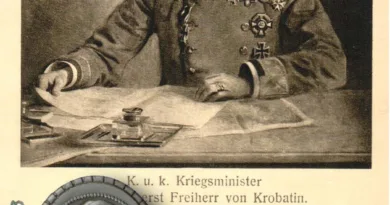Frigyes Csanády
He was born 1861 in Laibach (today Ljubljana). He studied in Keszthely and then in Kremsmünster. After graduating from the military school in Vienna, he began his military career in 1879. As early as 1890, at his request, he was transferred to the Royal Hungarian Army. He then graduated from the Vienna General Staff Academy. Already in 1899, as a lieutenant colonel, he was placed in the Hungarian Ministry of Defense as head of department. In 1903 he was promoted to colonel and appointed commander of the 12th Honvéd Infantry Regiment. From 1910 he was a major general and a brigade commander. In 1913 he became lieutenant general and commander of the 20th Army Infantry Division.
In the Great War he first led the 20th Honvéd Division until November 1914, when he was seriously wounded (chest shot). He recovered until the fall of 1915. He then took command of the 38th Division. With this division, he achieved combat success over the next half year. From November 1915, he fought successful defensive battles in the Siemikowce area against overwhelmingly attacking Russian troops. In June 1916 he was appointed commander of the 10th Corps. The 10th Corps played a major role in stopping the Bruszilov offensive. In November 1916 he was promoted to infantry general.
After the Romanian attack in 1916, he fought in Transylvania, now as commander of the 6th corps. In the spring of 1917, the 39th Division of the Corps under his command carried out the largest-scale Austro-Hungarian assault attack up till then in the Great War in the valley of the Uz and Csobános rivers and on the Magyaros roof rising between the two in the eastern Carpathians. The field was conquered with significant artillery reinforcement and through the assault training of an entire regiment (10th Honvéd Infantry Regiment) and its deployment as an assault troop. In the second half of 1917, he alternately served as commander of other corps. In 1918 he again became commander of the 10th Corps and remained until the end of the war. The 10th Corps was stationed on the Sieben Gemeinden Plateau, around the city of Asiago, and waged a loss-making counter-fight against the Italian and British forces.
He was discharged at the end of the war. He did not take up a post after the war either. He lived in Budapest, where he was among the first to be admitted to Governor Horthy’s Vitéz Order. In 1927 he became a member of the upper house of the Hungarian Parliament. He died 1937 in Budapest.

There were quite many three-star generals in the Monarchy, who ran a career similar to Csanády. Badge makers primarily modeled generals in the highest ranks and positions, with a few exceptions. Csanády’s name can be found on one of the pieces of the Arkanzas company’s series of oak leave pattern badges. The badge manufacturer apparently started production due to the portrayed commanders’ popularity and reputation. The events of the Siemikowce battle and the fighting over the Magyaros must have been well known by the general public. Together with these also the corps commander’s name could be well known.




